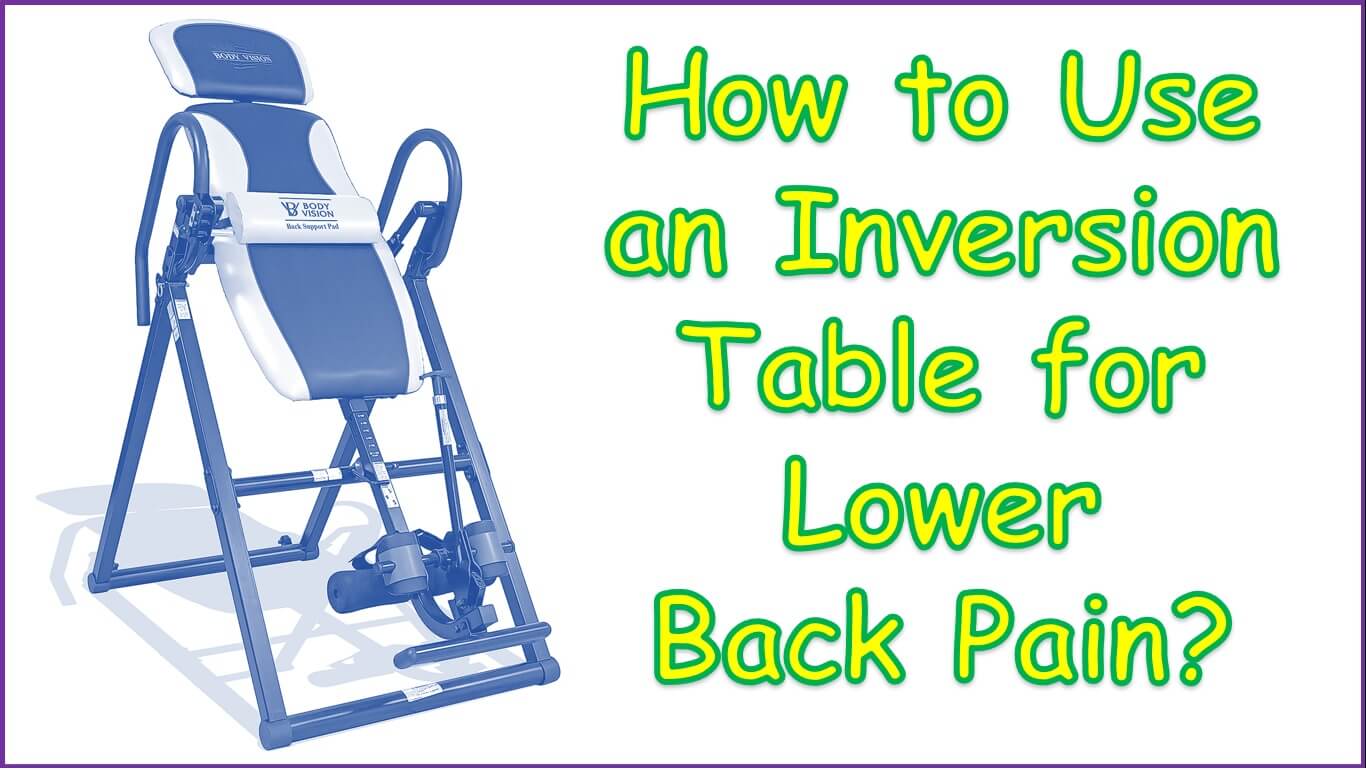If you’re dealing with annoying lower back pain, you know how much it can disrupt your daily life. Finding relief is essential, and one option that’s been gaining popularity is using an inversion table. But how exactly do you use it? Don’t worry; I’ve got you covered! In this article, we’ll walk through everything you need to know about using an inversion table for lower back pain.
Table of Contents:
Understanding Lower Back Pain
Before we dive into the specifics of inversion table usage, let’s quickly understand what causes lower back pain. It can result from various factors, such as poor posture, muscle strains, or even underlying spinal issues. It’s crucial to address the root cause of the pain to find long-lasting relief.

What is an Inversion Table?
An inversion table is like a special magic table that can help ease your lower back pain. It allows you to lie down and tilt backward, essentially putting you in an upside-down position. This process is called inversion therapy, and it’s believed to take the pressure off your spine, providing relief and promoting better spinal health overall.
Preparing to Use an Inversion Table
Before you jump right into using an inversion table, there are a few things you should know to ensure a safe and effective experience.
Checking the Inversion Table
First things first, inspect your inversion table. Make sure all parts, like the ankle clamps and safety straps, are in good condition. You wouldn’t want any surprises during your inversion therapy session.
Setting Up the Inversion Table
Position your inversion table on a flat surface. Adjust the height of the table according to your comfort level. It’s always helpful to have a buddy assist you during the setup process.
Adjusting the Angle
If you’re new to inversion therapy, start with a gentle angle, like 20 to 30 degrees. As you get more comfortable, you can increase the angle gradually.
Using an Inversion Table Safely
Safety first! Let’s go over some essential tips for using an inversion table safely and effectively.
Start Slowly
Rome wasn’t built in a day, and your inversion therapy skills won’t be either. Begin with short sessions, maybe just 1 to 2 minutes, and then slowly increase the duration over time. Give your body a chance to adapt.
Maintain Proper Form
No slouching allowed! Position your body correctly on the inversion table. Keep your head, neck, and spine aligned to avoid any unnecessary strain.
Listen to Your Body
Your body is pretty good at telling you what it likes and dislikes. If you feel any discomfort or pain during your inversion therapy, stop immediately and consult with a healthcare professional.
Avoid Overdoing It
As with most things in life, moderation is key. Don’t go overboard with your inversion therapy sessions. Too much of a good thing can lead to muscle fatigue and strain.
Benefits of Inversion Therapy for Lower Back Pain
So, why should you consider inversion therapy for your lower back pain? Let’s look at some of the fantastic benefits it can offer.
Spinal Decompression
Inversion therapy helps decompress your spine, relieving pressure on your spinal discs and nerves. This can significantly reduce lower back pain.
Improved Blood Circulation
When you’re inverted, blood flows better to your brain and upper body, promoting improved circulation and oxygen supply.
Muscle Relaxation
Hanging upside down allows your lower back muscles to relax, easing tension and promoting an overall sense of relaxation.
Posture Correction
Regular inversion therapy can help realign your spine and reduce pressure on your lower back, which, in turn, can lead to improved posture.
Stress Relief
Who doesn’t love a little stress relief? Inversion therapy can be quite relaxing, helping you unwind and destress.
Who Should Avoid Using an Inversion Table?
While inversion therapy can be excellent for many people, it may not be suitable for everyone. Let’s take a look at who should avoid using an inversion table.
Medical Conditions
If you have certain medical conditions like glaucoma, heart disease, or hypertension, it’s essential to check with your doctor before trying inversion therapy.
Pregnancy
Expecting moms should skip inversion therapy, as it can pose risks to both mom and baby.
Eye Problems
Individuals with eye issues or retinal problems should steer clear of inversion therapy, as hanging upside down can increase eye pressure.
Best Inversion Table for Lower Back Pain:
FAQs: How to Use an Inversion Table for Lower Back Pain?
Is inversion therapy safe for everyone?
While inversion therapy can be beneficial, it’s best to consult a healthcare professional if you have any medical concerns before giving it a try.
How often should I use an inversion table?
The frequency of your inversion therapy sessions depends on your comfort level. Start with a few sessions per week and see how your body responds.
Can I use an inversion table if I have high blood pressure?
If you have high blood pressure, talk to your doctor first before using an inversion table, as it may affect your blood pressure levels.
Can inversion therapy help with sciatica pain?
Inversion therapy can provide relief for some individuals with sciatica pain, but it may not work for everyone. Consult a healthcare professional for personalized advice.
Are there any alternatives to inversion tables for back pain relief?
Yes, there are other options like physical therapy, yoga, and core-strengthening exercises that can help with back pain relief. It’s always good to explore different options with a healthcare professional.
Conclusion: How to Use an Inversion Table for Lower Back Pain?
Inversion therapy using an inversion table can be a game-changer for those suffering from lower back pain. By following the proper guidelines and using the equipment safely, you can find relief and enjoy the wonderful benefits of inversion therapy. Just remember, it’s not suitable for everyone, so if you have any medical conditions, it’s best to check with your doctor before starting. Stay safe, and here’s to a healthier, happier back!
See Also:
- Best back inversion table
- Best Inversion Table for Lower Back Pain
- Compare sole treadmills
- Can walking on treadmill help lose weight
- Best Inversion Table for Sciatica
- Difference between nordictrack 1750 and 2450
- How long to use an inversion table
- Bowflex xtreme 2
- How Often Should You Use an Inversion Table?
- Who Should Not Use an Inversion Table?
- How Long Should I Use an Inversion Table for Sciatica
- Best Inversion Table for Neck Pain
- Does Hanging Upside Down Make You Taller?






Leave a Reply